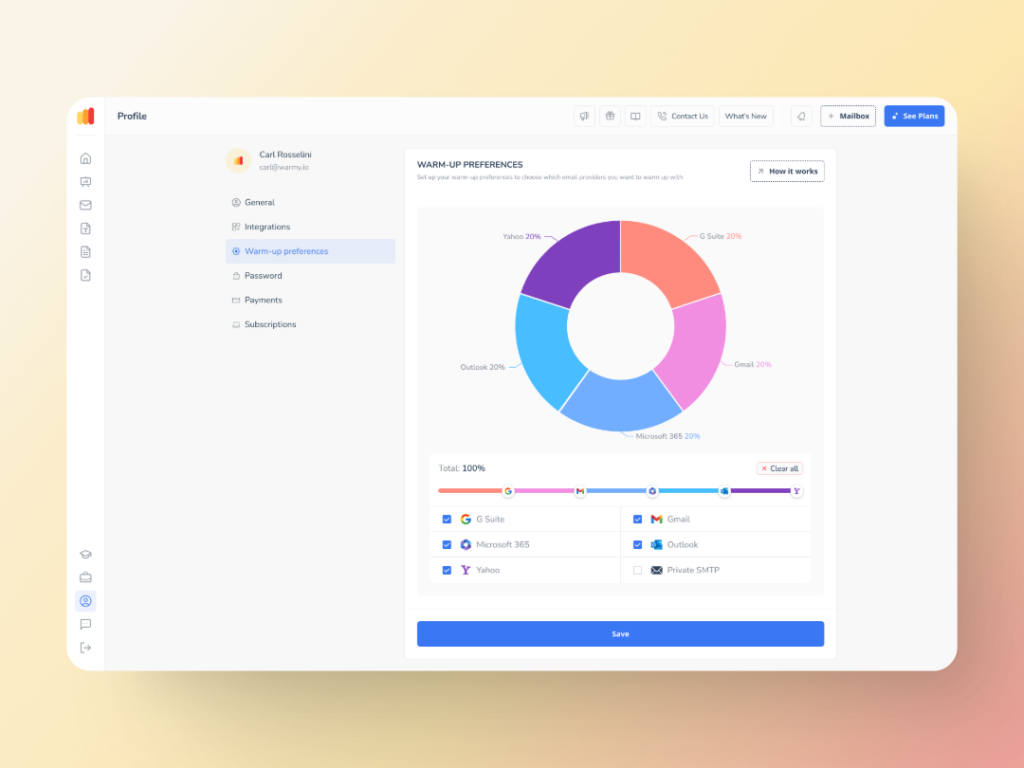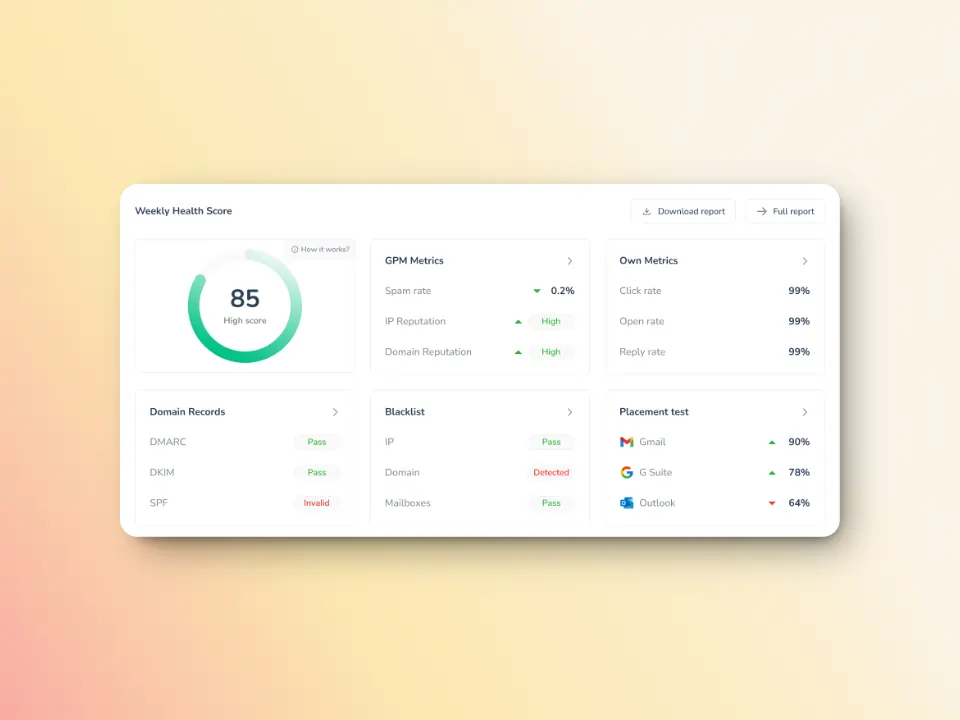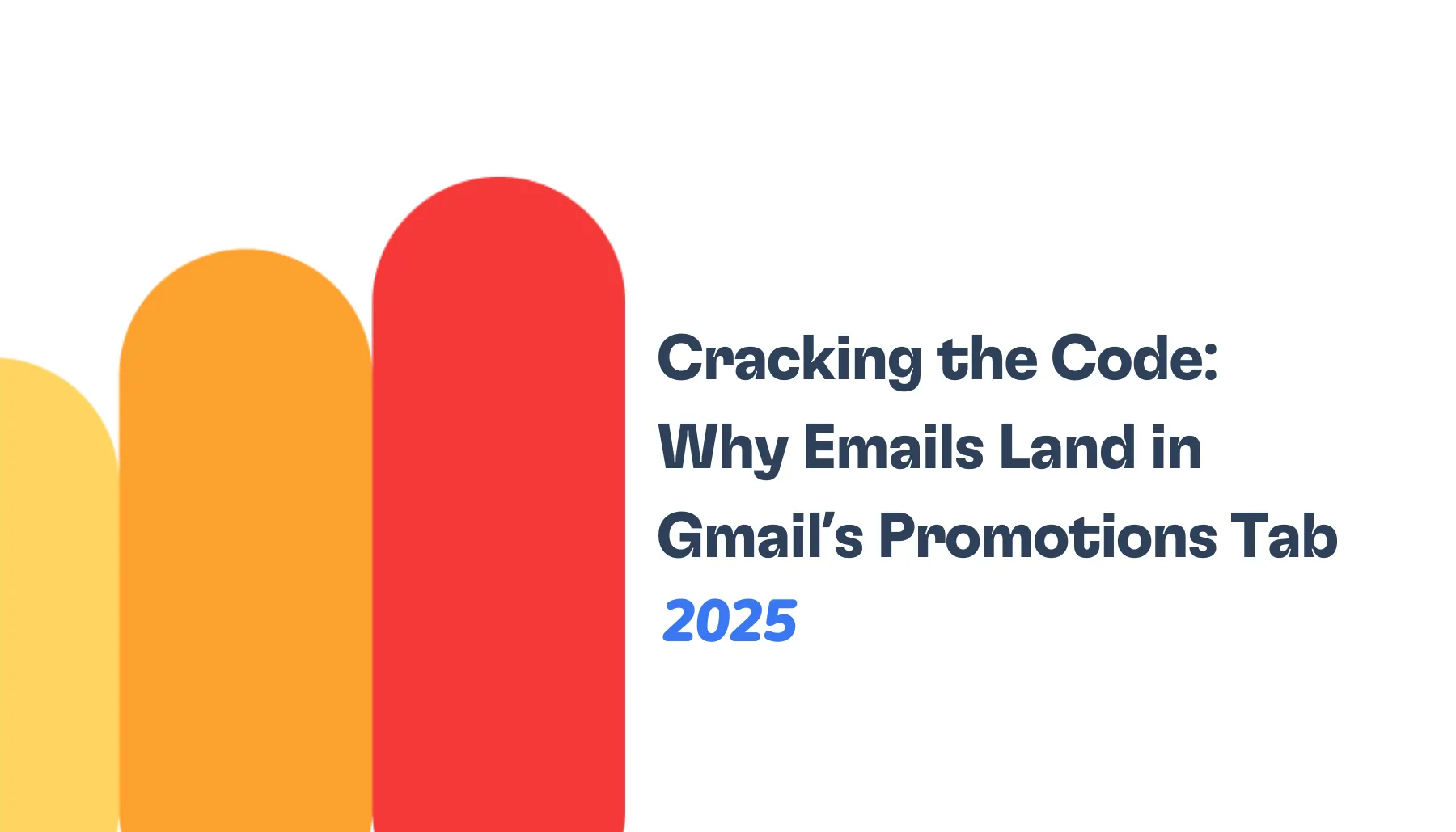In the SaaS landscape, success lies in nurturing leads and retaining customers. After all, the subscription business industry follows the recurring revenue model—with the MRR (monthly recurring revenue) as the indicator of growth.
But in a crowded field of SaaS companies, standing out requires more than generic marketing. It requires strategic, data-driven campaigns based on an understanding of your audience’s needs. Email marketing fills that gap, and is one of the most effective ways to affect those variables.
In this guide, we’ll share concrete email marketing tips tailored for SaaS businesses. From segmentation and personalization to drip campaigns and deliverability best practices, these strategies will help your team create engaging, results-driven campaigns.
Ready to take your SaaS email marketing strategies to the next level and achieve some real growth? Let’s dive in.
Why email marketing is not optional for SaaS companies
The global SaaS market is projected to generate almost $819 billion by 2029, showing that the potential for growth is immense.
Unlike many other digital channels, an email campaign offers a direct, personal line of communication with users throughout their entire customer journey. It’s can be used to reach your users at every touchpoint—both for new users you are attracting, existing subscribers, and returning users who need more value from your product.
An effective email marketing strategy will increase your trial-to-paid conversions, lower your churn, and increase lifetime value per customer. It boasts one of the most favorable ROIs of digital channels, so it’s essential in any SaaS marketer’s arsenal. Ignoring or downplaying email marketing means you might be missing out on vital chances to engage, educate, and influence your audience.
Other benefits of email marketing for SaaS include:
- Provides an efficient lead nurture process: Emails allow SaaS businesses to deliver relevant messages that move prospects closer to a purchase decision. Automated campaigns keep leads engaged without extra manual effort.
- Boosts trial-to-paid conversions: Targeted onboarding emails can be used to increase the chance that free users will upgrade from free trials to paid plans.
- Increases customer retention: Regular email communication keeps existing subscribers interested, informed, engaged, and satisfied. The always cited Bain research shares that increasing customer retention rates by as little as 5% can increase profits by 25% to as much as 95%.
- Drives upsell and cross-sell opportunities: Segmented campaigns from an email list can promote relevant upgrades, add-ons, or complementary services to maximize revenue from your existing subscriber base.
- Generates measurable results: It’s easy to attribute revenue to email marketing efforts. Email marketing platforms provide detailed analytics, letting you track open rates, clicks, conversions, and revenue.
7 best email marketing strategies for SaaS companies
Implementing the right email marketing strategies can transform how SaaS companies engage prospects and customers. Below are seven top strategies proven to deliver results in the SaaS space.
1. Personalize and segment your users
Let’s look at some numbers from Klaviyo:
- Highly segmented emails had 16.17% average open rates compared to 9.95% of non-segmented emails
- Highly segmented email sends had an average click-through rate of 1.99% vs 0.92% of non-segmented emails.
Even more impressive is the revenue—highly segmented lists had more than 3x the revenue per recipient (RPR). For SaaS companies, users are at different stages in their customer journey.
Thus, delivering the right email campaign at the right time matters more than ever. SaaS businesses can explore personalizing content based on where users are currently at. For example, email personalization can include these examples:
- New users can receive email messages with onboarding tips and guides on how to use your product
- Active users can receive regular feature updates and advanced tutorials
- Inactive users can be sent check-ins and re-engagement offers or surveys
- Subscribers nearing their renewal period can be offered discounted upgrades along with reminders
🔖 Relevant Reading: Tools for segmenting the customer base
2. Design effective drip campaigns to generate more leads
A drip campaign is an email automation sequence that moves prospects and users through specific customer touchpoints. Email drip campaigns can: over time, generate the desired, intended engagement, qualified actions that lead to conversion.
Here are some of the must-have drip campaigns for SaaS companies:
New free trial user flow
This sequence is for customers who have recently activated a free trial. The main goal is to provide an effective onboarding experience and eliminate any form of ambiguity. A long-term goal is to eventually convert them to a paying customer.
Example: Send a series of emails over the first days or weeks of the trial that introduce core features, share tutorials, and highlight benefits. This keeps users engaged and helps prevent trial abandonment.
This new free trial users flow may include any of these types of emails:
- Welcome email thanking users for signing up
- Quick-start guide or video tutorial
- Tips on how to use key features
- Invitation to join webinars or live demos
- Reminder before the trial ends with upgrade options
Free trial user nurture flow
After the onboarding, it is vital to continue engaging with your trial users. You can achieve this by following up at the right time to encourage further exploration of your product or book demos.
Explore setting up periodic emails that also allow you to check in on user status, extend a helping hand, or ask the user to take the next step by scheduling a demo or contacting your support team.
Examples of messaging angles:
- “How’s your trial going?” check-in
- Case studies or success stories
- Demo booking invitations
- Personalized advice based on usage data
- Incentives like discounts for early upgrades
Educational drip campaigns to drive activation
Successful SaaS email marketing always leaves room to focus on delivering value through content that helps users understand how to get the most from the SaaS product. Sharing best practices, tutorials, FAQs, etc., empowers your users to activate the core features that will increase retention and satisfaction.
Examples include:
- Weekly emails with in-depth feature guides
- Video tutorials or product walkthroughs
- FAQ or troubleshooting tips
- Invitations to knowledge base resources or forums
- Highlight new feature releases
3. Implement email marketing automation to cover the entire lifecycle
Automation also empowers SaaS companies to send personalized messages at scale throughout the entire customer lifecycle. Additionally, automated emails generate 320% more revenue compared to non-automated ones. Aside from this promising return, they also reduce manual effort and ensure every user receives relevant content that encourages progression from prospect to loyal customer.
The basic automation flows that SaaS companies must have include the following:
New subscriber and onboarding flow
This is an automated sequence that welcomes new subscribers or sign-ups and guides them through initial product setup and usage. The goal is to introduce your SaaS product, educates users on key features, and encourage activation. You will probably never have a second chance to make a first impression, so utilize all of the steps in this flow to the maximum.
Best practices include:
- Send a warm welcome email immediately
- Provide step-by-step onboarding instructions
- Include links to tutorials or support
- Space out emails to avoid overwhelm
Example: A SaaS tool sends a welcome email on day one, a “getting started” guide on day three, followed by feature highlights and info bites on days seven and fourteen.
Upsell and cross-sell flows
These are automated emails targeting existing customers to promote higher-tier plans or complementary products. It basically encourages them to spend more and increase their customer lifetime value.
To effectively upsell and cross-sell, it’s recommended to apply segmentation techniques based on subscribers’ current plans and usage. Combined with personalized offer and highlighted benefits, these flows can generate additional revenue—cross-selling can actually boost sales by 20%.
Example: Customers using a basic plan receive emails showcasing premium features with exclusive upgrade discounts after 30 days of active use.
Retention flows
Overall, the cost of customer acquisition is expected to increase. With the recurring revenue model, SaaS businesses are able to offset such costs by retaining subscribers. After all, current customers spend 67% more on average compared to new customers.
Using retention flows is part of an email strategy designed to keep current customers engaged and satisfied, reducing churn. Email content usually centers around product updates, and engagement prompts to maintain ongoing interest.
Example: Monthly emails sharing new feature releases, best practices, and invitations to user community events.
Customer winback flows
Yes, businesses can also use email marketing to win back subscribers—as they should. Customer winback flows are emails specifically for inactive or churned customers to encourage re-engagement. The goal is to renew interest and bring users back into active use.
Best practices:
- Identify inactivity based on usage or login data
- Offer incentives or highlight new features
- Keep messaging empathetic and helpful (
Example: A series of emails sent to users inactive for 60+ days, starting with a “We miss you” or “It’s been a while” message followed by a special offer.
Dunning sequences
Now sometimes, customer churn can be involuntary. This can happen when there are failed payments due to any of the following reasons:
- Credit card on file has expired
- Credit card on file is at its maximum limit already
- Payment information is outdated
- Technical bugs
Here’s the kicker: about 20-40% of churn is involuntary—which means it can be avoided. And it also means that the subscriber didn’t churn on purpose! Take the time to cover all your bases. Aside from implementing campaigns designed to prevent churn, it’s better to have a back up.
Best practices for dunning:
- Start with polite reminders soon after payment failure
- Increase urgency gradually without sounding aggressive
- Include clear instructions to resolve the issue and even a direct payment link
- Make it easy for them to reactivate payment and their account
Example: Three-step sequence: day 1 friendly reminder, day 5 warning of service suspension, day 10 final notice before cancellation.
4. Reduce churn with re-engagement strategies
Retaining customers is crucial for SaaS companies, and well-planned re-engagement campaigns can help bring back inactive users before they churn. These are the key strategies to identifying disengaged customers and reengaging them through personalized outreach:
- Identify inactive users early on. Set clear criteria to define this. For example, no log-ins in the past 30 days.
- Monitor email engagement metrics like open rates and click-through rates to get an idea if there is an impending issue
- Collect feedback through surveys or feedback requests
Example: A SaaS platform flags users who haven’t logged in for 45 days or haven’t opened any emails in 60 days for re-engagement outreach.
5. Conduct A/B testing on subject lines and content
A/B testing is the process of testing two versions of an email to see which gets a better result from subscribers. This process helps identify the most compelling subject lines, copy, images, and layouts.
Best practices:
- Test one variable at a time for clear results
- Use statistically significant sample sizes
- Apply winning variants to full audience
Example: A/B test email subject lines and track open rates to determine which works best for your subscribers.
6. Maintain high deliverability and compliance
Maintaining a strong sender reputation and following legal requirements are critical to ensuring your emails reach inboxes and avoid penalties.
Ensure proper email authentication (SPF, DKIM, DMARC)
These are technical protocols that verify your email domain and prevent spoofing.
Q: What are SPF, DKIM, and DMARC?
A: Sender Policy Framework (SPF), DomainKeys Identified Mail (DKIM), and Domain-based Message Authentication, Reporting & Conformance (DMARC), are all email authentication protocols that confirm your emails are sent from reputable and legitimate servers. They help prevent spoofing and phishing. Used together, they help improve email deliverability and build trust with mailbox providers.
🔖 Related Reading: SPF, DKIM, and DMARC: Boosting Email Security and Deliverability
Comply with GDPR, CAN-SPAM, and other regulations
Legal guidelines like GDPR and CAN-SPAM exist to protect users. Non-compliance can result in fines and damaged reputation. Damaged reputation can result in poor deliverability. Poor deliverability means more emails are landing in spam than inboxes—rendering all your efforts as wasted.
🔖 Bonus Resource: Email Marketing Compliance Checklist for US Market
7. Use Warmy.io for a solid deliverability foundation
Email marketing in SaaS will not succeed without a proper foundation. Here’s what we mean by this. You can spend hours on writing really cool email copy. You can spend a ton of budget on online courses. But if your emails don’t even see the inside of an inbox, all your efforts will be for naught.
High deliverability matters for a SaaS company that wants to maximize the benefits gained from email marketing. Warmy.io provides a suite of tools designed to automate and enhance the email warm-up process, helping you establish a trusted sender reputation and keep your emails landing in the inbox.
Automated warmup process with customizable preferences
Warmy.io uses AI-driven algorithms to customize the warm-up strategy based on factors like your domain’s age, sending history, and goals.

This process helps to establish a good domain and IP reputation with email service providers, which reduces the risk of your emails landing in spam. By using authentic interactions, Warmy helps you build a strong foundation for successful email marketing campaigns.
Don’t forget the new Warmup Preferences feature—which optimizes your email warmup strategy all the more. SaaS businesses can customize the warmup distribution across different providers and choose if they want to use B2B or B2C customers for engagement patterns to tailor the behavior and insights to their business type.

Advanced seed lists
Warmy.io provides diverse, real recipient seed lists that simulate genuine email interactions. These lists help improve engagement signals and test your campaigns’ inbox placement, giving you confidence your emails reach real users.
Warm’s advanced seed lists are genuine email addresses that simulate real engagement. Emails are opened, read, and clicked. What if an email lands in spam? It is manually removed and marked as important to improve future deliverability. Using these seed lists enable ecommerce businesses to maximize their deliverability potential before executing large scale campaigns.
Template Checker
Before sending your email campaigns, use Warmy.io’s Template Checker to analyze your email content for spam triggers and deliverability risks. This tool helps optimize subject lines, HTML structure, and wording to avoid common pitfalls that cause emails to get filtered.
This template checker now has a Chrome Extension version too—for even more accessibility.
Domain Health Hub
Monitor your domain’s health with Warmy.io’s centralized dashboard. It tracks authentication status (SPF, DKIM, DMARC), blacklist monitoring, and sender reputation metrics, providing actionable insights to keep your deliverability on track.

This monitoring tool helps you maintain a strong sender reputation throughout. Plus, armed with valuable data, you can quickly address any issues that could affect your deliverability.
Ready to transform your SaaS email marketing?
The SaaS market is competitive, but with the right email marketing approach, you can build lasting relationships that fuel sustainable success. Don’t miss out on the full potential of your email campaigns. Start applying these expert strategies today to increase engagement, boost trial-to-paid conversions, and grow your recurring revenue.
Take the next step—book a free demo and watch your business thrive!











